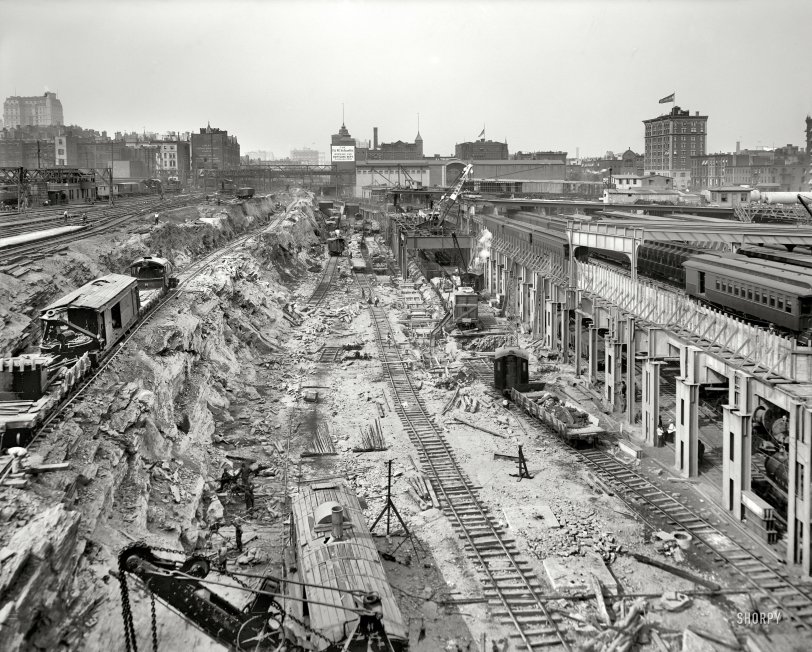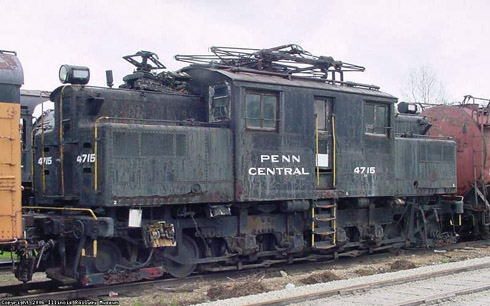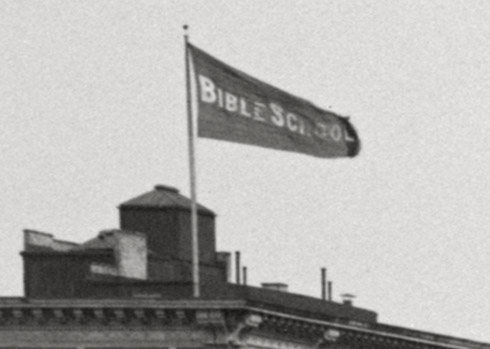


Framed or unframed, desk size to sofa size, printed by us in Arizona and Alabama since 2007. Explore now.
Shorpy is funded by you. Patreon contributors get an ad-free experience.
Learn more.

- Roll your own
- Rugged and real!
- A Charles Purcell - Mama Cass Connection
- Uncle SAAM
- Obfuscation
- One Chocolate Soldier rode away
- Victor Marquis de la Roche
- The Little House Across Way ...
- Vanderbilt Gates
- Vanderbilt Mansion
- You can still see that gate
- Withering heights for me
- So Jim,
- Top Heavy
- Re: Can't Place It.
- Bus ID
- Since you mention it
- The White Pages ?
- Moonlight Tower
- 1907?
- Fire(men) and Water
- Can't Place It
- Can anyone
- Wings
- Where's Claudette and Clark?
- Overbuilt Rolodex
- One song
- Give Me Wings Please!
- PRR
- Pinball Wizards
Printporium
Infrastructure: 1908

New York, 1908. "Excavations for N.Y. Central Station." Grand Central Terminal under construction, with Detroit Publishing's camera turned around from our previous view of this monumental engineering project. View full size.
Steam Engines.
In regards to the steam locomotives in this picture, it's more likely that they were classified as "Contractor" locomotives, and thus fell in with the permits that allowed steam engines (engine in as much powered by a boiler) like those in the cranes to operate in the city on a limited basis.
It is worth noting that the actual "ban" back in 1902 was passed after a train struck another while in a tunnel. The ban itself however did allow certain locomotives, such as the two shay types that the NYC operated along the port areas, as well as numerous small locomotives like these contractor engines, to continue to operate under certain conditions. As stated above, in this case they would have fallen under a size restriction, being used in construction. In the case of the shays, it was the fact that their top speed was barely 13 mph.
In the Winds
The Bible School flag flew atop home of Bible Teachers' Training School at 541 Lexington Avenue (49th Street).
S Motors
The two electric locomotives are "S Motors" I think. They would have been only a couple of years old in 1908. Here's a picture of a survivor from the Illinois Railway Museum.

Steamed Part 2
I believe the 1902 ban on steam engines in NYC related to operation in tunnels. See https://www.shorpy.com/node/1782 for an example of a steam engine operating on the streets of NYC in 1911. This photo is one of my favorites on Shorpy, showing a rich street life in the early 20th century.
Fireless cookers
The two locomotives observed in the terminal excavation by one poster were known as "fireless cookers." They used steam accumulators instead of boilers, with the steam coming from a stationary boiler. The locomotives themselves had no fires; you can see that they carry no coal.
Blowin' in the wind
American flags, laundry, and this wonderful flag over the Bible School. Anybody know what the address was?

Schaefer
was the one beer to have when one had more than one! Schaefer sold the lot on the east side of Park Avenue between 50th and 51st streets for $1.5 million to St. Bartholomew's in 1914.
Steamed
I know that by 1902 steam locomotives were banned from operating within the limits of New York City after a crash that same year caused an uproar. Interesting then to see at least two in this photo. I wonder if the New York Central Railroad got a special exemption for the construction of the terminal.
Fascinating
What really fascinates me about this photograph is that two eras are meeting head on. There are wooded platform passenger and freight cars, complete with turnbuckle truss rods and new electric motors in this photograph. There's wooden signal bridges (or at least I assume they're signal bridges) and the steel supports that still in use in Grand Central Terminal. The steamshovels are cutting edge, whereas the other work cars have wooden frames. What a great juxtaposition.
Mansard Roof
I like the classic 19th Century Shaefer Brewery Works in the rear center...but what is the building rising out of the horizon on the left side? It looks kind of spooky in an old hospital or orphanage kind of way. I'm assuming both buildings are long gone.
Mini Panama
Steam shovels, terraced excavation, dirt trains, concrete and steel. It's like a scaled down Pamana Canal, which was being dug at the same time this picture was taken.
























On Shorpy:
Today’s Top 5